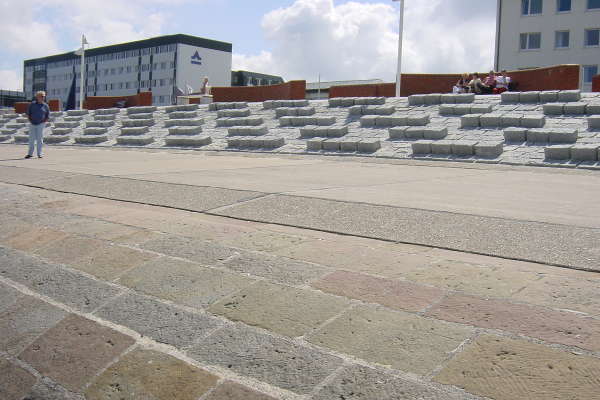Access to PC-Overtopping
With the first manual in 2007 an online Calculation Tool had been developed to assist the user through a series of steps to establish overtopping predictions for: embankments and dikes; rubble mound structures; and vertical structures. Unfortunately, funds could not be raised to update the Calculation Tool with the new formulae in the 2018 version. It is for this reason that the old calculation tool has been removed from the website and is not available as a tool covering this new manual. Only PC-Overtopping remains at present.
The programme PC-Overtopping was made (in Dutch) on the results of TAW (2002) and is used for the safety assessment of all water defences in the Netherlands. The TAW Report was replaced by Chapter 5 of EurOtop (2007). The programme was mainly based on a dike type structure. It means that the structure should be sloping, although a small vertical wall on top of the dike may be taken into account. Roughness / permeability on the slope can be taken into account, but not a crest with permeable and rough rock or armour units. In such a case the structure should be modelled up to the transition to the crest and other formulae should be used to take into account the effect of the crest. PC-Overtopping has not been updated, but is still available as a stand-alone version in Dutch. Section 4.3 of EurOtop (2018) gives a description with English terms. It will continue to give the same answers as EurOtop (2007), and there are presently no plans to update it in the future. The changes of prediction formulae for mild-sloped dikes in the 2018 version are relatively small compared to the 2007 edition, except for very small freeboards. For larger freeboards, use of PC-Overtopping may continue to give useful predictions. The user is advised to make a few manual checks using the new formulae if in doubt.
The Dutch version is available as stand-alone program to be installed on your own computer (to be downloaded as zipfile).
The programme PC-Overtopping was made (in Dutch) on the results of TAW (2002) and is used for the safety assessment of all water defences in the Netherlands. The TAW Report was replaced by Chapter 5 of EurOtop (2007). The programme was mainly based on a dike type structure. It means that the structure should be sloping, although a small vertical wall on top of the dike may be taken into account. Roughness / permeability on the slope can be taken into account, but not a crest with permeable and rough rock or armour units. In such a case the structure should be modelled up to the transition to the crest and other formulae should be used to take into account the effect of the crest. PC-Overtopping has not been updated, but is still available as a stand-alone version in Dutch. Section 4.3 of EurOtop (2018) gives a description with English terms. It will continue to give the same answers as EurOtop (2007), and there are presently no plans to update it in the future. The changes of prediction formulae for mild-sloped dikes in the 2018 version are relatively small compared to the 2007 edition, except for very small freeboards. For larger freeboards, use of PC-Overtopping may continue to give useful predictions. The user is advised to make a few manual checks using the new formulae if in doubt.
The Dutch version is available as stand-alone program to be installed on your own computer (to be downloaded as zipfile).

